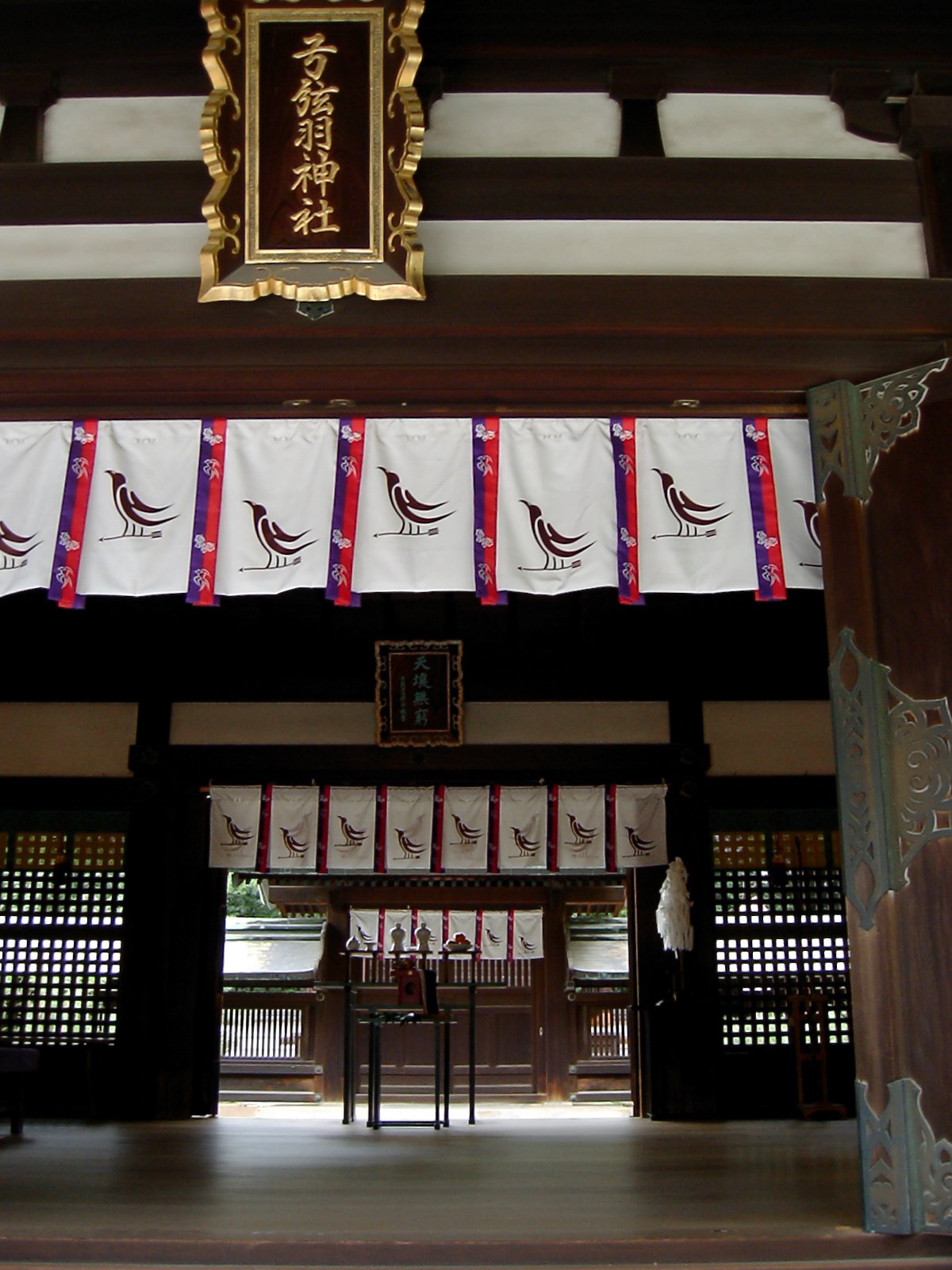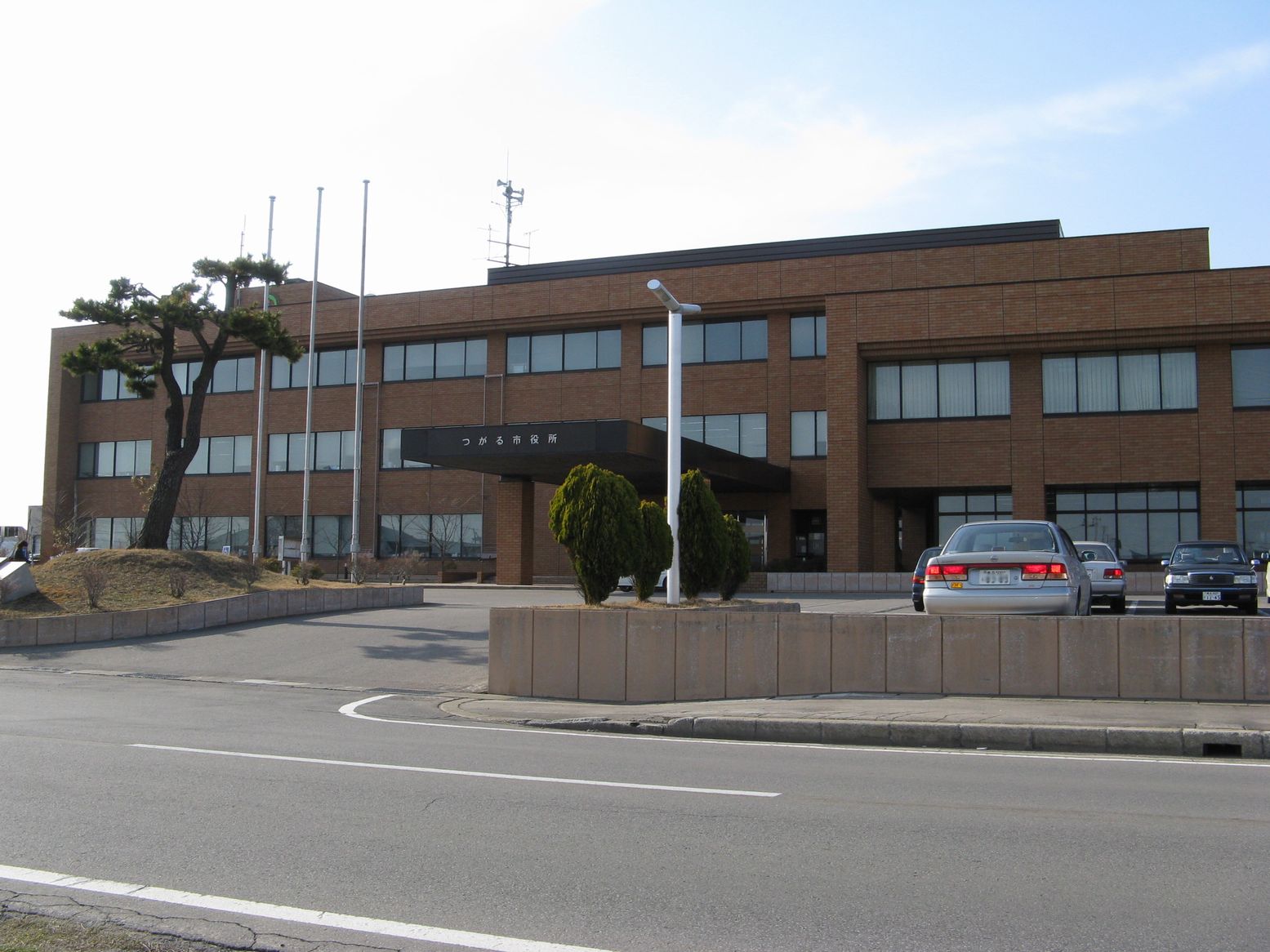|
Misaki
Misaki (, "misaki") are a collective term for spirit-like existences in Japan like gods, demons and spirits, among other supernatural entities. Their name comes from a kannushi's vanguard. Summary Misaki are subordinate to the high-ranking divine spirits, and when divine spirits appear in the human realm and are said to be the small-scale divine spirits that appear as omens or to serve as their familiar spirits. Misaki can be often seen as animals. The Yatagarasu that appears in Japanese mythology is one type of misaki, and when Yatagarasu guided Emperor Jimmu during Jimmu's eastern journey, this provides one example of the characteristics of misaki. Also, the kitsune within Inari Ōkami household are also one type of misaki, and like these Yatagarasu and kitsune, those that appear as heralding something important and the incarnation of gods are also considered misaki. In Iwaki, Fukushima Prefecture, on January 11, when they first hoe the field, they would say "kamisaki kamis ... [...More Info...] [...Related Items...] OR: [Wikipedia] [Google] [Baidu] |
Emperor Jimmu
was the legendary first emperor of Japan according to the and . His ascension is traditionally dated as 660 BC.Kelly, Charles F"Kofun Culture" April 27, 2009.* Kitagawa, Joseph (1987). : "emphasis on the undisrupted chronological continuity from myths to legends and from legends to history, it is difficult to determine where one ends and the next begins. At any rate, the first ten legendary emperors are clearly not reliable historical records." * Boleslaw Szczesniak, "The Sumu-Sanu Myth: Notes and Remarks on the Jimmu Tenno Myth", in ''Monumenta Nipponica'', Vol. 10, No. 1/2 (Winter 1954), pp. 107–26. . . In Japanese mythology, he was a descendant of the sun goddess Amaterasu, through her grandson Ninigi-no-Mikoto, Ninigi, as well as a descendant of the storm god Susanoo-n ... [...More Info...] [...Related Items...] OR: [Wikipedia] [Google] [Baidu] |
Yatagarasu
is a mythical crowThe Book of Ancient Matters, The Book of Ancient Matters, Gakken, pp. 130, 138, 139. and guiding Kami, god in Shinto mythology. He is generally known for his three-legged figure, and his picture has been handed down since ancient times. The word means "eight-span crow" and the appearance of the great bird is construed as evidence of the will of Heaven or divine intervention in human affairs. Yatagarasu as a crow-god is a symbol specifically of guidance. This great crow was sent from heaven by Takamimusubi as a guide for legendary Emperor Jimmu on his initial journey from the region which would become Kumano Region, Kumano to what would become Yamato Province, Yamato (Yoshino, Nara, Yoshino and then Kashihara, Nara, Kashihara). It is generally accepted that Yatagarasu is an incarnation of Kamotaketsunumi no Mikoto, but none of the early surviving documentary records are quite so specific. Overview In Japanese mythology, the Yatagarasu is said to have guid ... [...More Info...] [...Related Items...] OR: [Wikipedia] [Google] [Baidu] |
Iwaki, Fukushima
is a Cities of Japan, city located in Fukushima Prefecture, Japan. , Iwaki had a population of 322,019 in 143,500 households, and population density of 261 persons per km². The total area of the city is , making it the largest city in the prefecture and the 10th largest city in Japan (2010) in terms of area. Iwaki is a designated Core cities of Japan, core city, and is also one of the growing number of Hiragana and katakana place names, cities written in ''hiragana''. The present Iwaki City started as the merger of 14 smaller municipalities on October 1, 1966. Every year, Iwaki hosts the Taira Tanabata Festival from 6–8 August. Geography and climate The city is located at the southeastern end of Tōhoku region and borders on Ibaraki Prefecture. The city occupies around 8.9 percent of the total area of Fukushima Prefecture. The eastern part of the city is made up of of coastline which faces the Pacific Ocean and the western part goes through the Abukuma highlands and joins up w ... [...More Info...] [...Related Items...] OR: [Wikipedia] [Google] [Baidu] |
Demon
A demon is a malevolent supernatural entity. Historically, belief in demons, or stories about demons, occurs in folklore, mythology, religion, occultism, and literature; these beliefs are reflected in Media (communication), media including fiction, comics, film, television series, television, and video games. Belief in demons probably goes back to the Paleolithic, Paleolithic age, stemming from humanity's fear of the unknown, the strange and the horrific.. In Religions of the ancient Near East, ancient Near Eastern religions and in the Abrahamic religions, including History of Judaism, early Judaism and ancient-medieval Christian demonology, a demon is considered a harmful spiritual entity that may cause Spirit possession, demonic possession, calling for an exorcism. Large portions of Jewish demonology, a key influence on Christianity and Islam, originated from a later form of Zoroastrianism, and was transferred to Judaism during the Achaemenid Empire, Persian era. Demons may ... [...More Info...] [...Related Items...] OR: [Wikipedia] [Google] [Baidu] |
Chūgoku Region
The , also known as the region, is the westernmost region of Honshū, the largest island of Japan. It consists of the prefectures of Hiroshima, Okayama, Shimane, Tottori and Yamaguchi. As of the 2020 census, it has a population of 7,328,339. History ''Chūgoku'' literally means "middle country", but the origin of the name is unclear. Historically, Japan was divided into a number of provinces called ''koku'', which were in turn classified according to both their power and their distances from the administrative center in Kansai. Under the latter classification, most provinces are divided into , , and . Therefore, one explanation is that ''Chūgoku'' was originally used to refer to the collection of "middle countries" to the west of the capital. However, only five (fewer than half) of the provinces normally considered part of Chūgoku region were in fact classified as middle countries, and the term never applied to the many middle countries to the east of Kansai. Therefore, a ... [...More Info...] [...Related Items...] OR: [Wikipedia] [Google] [Baidu] |
Aomori Prefecture
is a Prefectures of Japan, prefecture of Japan in the Tōhoku region. The prefecture's capital, largest city, and namesake is the city of Aomori (city), Aomori. Aomori is the northernmost prefecture on Japan's main island, Honshu, and is bordered by the Pacific Ocean to the east, Iwate Prefecture to the southeast, Akita Prefecture to the southwest, the Sea of Japan to the west, and Hokkaido across the Tsugaru Strait to the north. Aomori Prefecture is the List of Japanese prefectures by area, 8th-largest prefecture, with an area of , and the List of Japanese prefectures by population, 31st-most populous prefecture, with more than 1.18 million people. Approximately 45 percent of Aomori Prefecture's residents live in its two Core cities of Japan, core cities, Aomori and Hachinohe, which lie on coastal plains. The majority of the prefecture is covered in forested mountain ranges, with population centers occupying valleys and plains. Aomori is the third-most populous prefecture i ... [...More Info...] [...Related Items...] OR: [Wikipedia] [Google] [Baidu] |
Tsugaru, Aomori
Jōmon period ''Dogū'' statue found in Tsugaru file:Takayama Inari Shrine.JPG">250px, Takayama Inari Shrine is a city located in Aomori Prefecture, Japan. , the city had an estimated population of 30,128 in 13487 households, and a population density of 120 persons per km². The total area of the city is . The city's name is atypical for a Japanese place, in that it is written in ''hiragana'' rather than ''kanji'' (see '' hiragana cities''). Geography Tsugaru is located on the west coast of Tsugaru Peninsula, facing the Sea of Japan. The Iwaki River flows through the city. Parts of the city are within the borders of Tsugaru Quasi-National Park. Neighbouring municipalities Aomori Prefecture * Ajigasawa *Goshogawara *Hirosaki * Nakadomari * Tsuruta Climate The city has a cold humid continental climate (Köppen ''Dfb'') characterized by warm short summers and long cold winters with heavy snowfall. The average annual temperature in Tsugaru is 10.6 °C. The average annual ... [...More Info...] [...Related Items...] OR: [Wikipedia] [Google] [Baidu] |
Shichinin Misaki
The Shichinin misaki (七人ミサキ or 七人みさき), which means "7-person misaki," are a group of ghosts first known in Kōchi Prefecture, told about in the Shikoku and Chūgoku regions.村上健司編著 『妖怪事典』 毎日新聞社、2000年、181頁。。 Summary They are ghosts of humans who died from calamities and accidents, especially drowning at sea.多田克己 『幻想世界の住人たち IV 日本編』 新紀元社、1990年、69頁、175-176頁。。 As according to its name, they normally, together as a group of seven, appear mainly near water, like seas and rivers. Humans who encounter the shichinin misaki experience a high fever, and die. By possessing and killing one person, one of the spirits of the shichinin misaki are able to go to peace, and in its place, the one who was possessed and killed becomes one of the shichinin misaki. For this reason, the shichinin misaki are always a group of seven, never increasing nor decreasing.草野巧 『幻� ... [...More Info...] [...Related Items...] OR: [Wikipedia] [Google] [Baidu] |
Fukuoka Prefecture
is a Prefectures of Japan, prefecture of Japan located on the island of Kyūshū. Fukuoka Prefecture has a population of 5,109,323 (1 June 2019) and has a geographic area of 4,986 Square kilometre, km2 (1,925 sq mi). Fukuoka Prefecture borders Saga Prefecture to the southwest, Kumamoto Prefecture to the south, and Ōita Prefecture to the southeast. Fukuoka is the capital and largest city of Fukuoka Prefecture, and the largest city on Kyūshū, with other major cities including Kitakyushu, Kurume, and Ōmuta, Fukuoka, Ōmuta. Fukuoka Prefecture is located at the northernmost point of Kyūshū on the Kanmon Straits, connecting the Tsushima Strait and the Seto Inland Sea across from Yamaguchi Prefecture on the island of Honshu, and extends south towards the Ariake Sea. History Fukuoka Prefecture includes the Old provinces of Japan, former provinces of Chikugo Province, Chikugo, Chikuzen Province, Chikuzen, and Buzen Province, Buzen. Shrines and temples Kōra taisha, Sumiyoshi-j ... [...More Info...] [...Related Items...] OR: [Wikipedia] [Google] [Baidu] |
Kōchi Prefecture
is a prefecture of Japan located on the island of Shikoku. Kōchi Prefecture has a population of 669,516 (1 April 2023) and has a geographic area of 7,103 km2 (2,742 sq mi). Kōchi Prefecture borders Ehime Prefecture to the northwest and Tokushima Prefecture to the northeast. Kōchi is the capital and largest city of Kōchi Prefecture, with other major cities including Nankoku, Shimanto, and Kōnan. Kōchi Prefecture is located on Japan's Pacific coast surrounding a large bay in the south of Shikoku, with the southernmost point of the island located at Cape Ashizuri in Tosashimizu. Kōchi Prefecture is home to Kōchi Castle, considered the most intact Japanese castle, and the Shimanto River, one of the few undammed rivers in Japan. History Antiquity Before the Ritsuryō System In the Kujiki, first recorded governments in Kōchi Prefecture were Hata (in the west) and Tosa (in the center). Hata was established first, so it is thought that it had more influen ... [...More Info...] [...Related Items...] OR: [Wikipedia] [Google] [Baidu] |
Tokushima Prefecture
is a Prefectures of Japan, prefecture of Japan located on the island of Shikoku. Tokushima Prefecture has a population of 682,439 (1 February 2025) and has a geographic area of 4,146 Square kilometre, km2 (1,601 sq mi). Tokushima Prefecture borders Kagawa Prefecture to the north, Ehime Prefecture to the west, and Kōchi Prefecture to the southwest. Tokushima, Tokushima, Tokushima is the capital and largest city of Tokushima Prefecture, with other major cities including Anan, Tokushima, Anan, Naruto, Tokushima, Naruto, and Yoshinogawa, Tokushima, Yoshinogawa. Tokushima Prefecture is located on the Kii Channel, connecting the Pacific Ocean and Seto Inland Sea, across from Wakayama Prefecture on the Kii Peninsula of the island of Honshu. Tokushima Prefecture is connected to Awaji Island across the Naruto Strait by the Ōnaruto Bridge as part of the Kobe-Awaji-Naruto Expressway, connecting the prefecture to the city of Kobe and the San'yō Expressway on Honshu. History Until ... [...More Info...] [...Related Items...] OR: [Wikipedia] [Google] [Baidu] |







